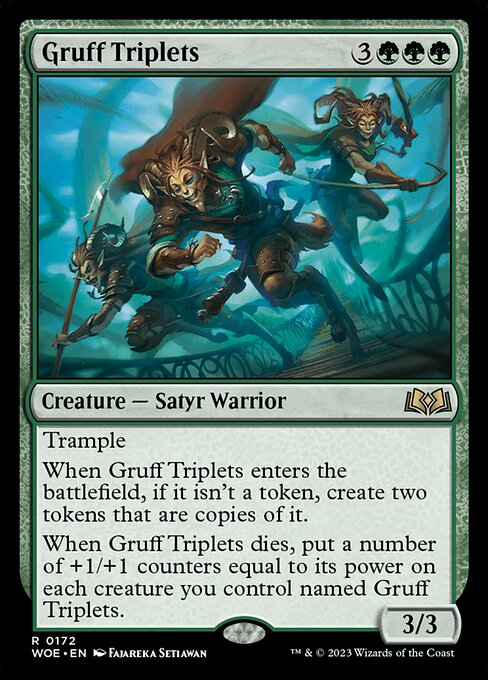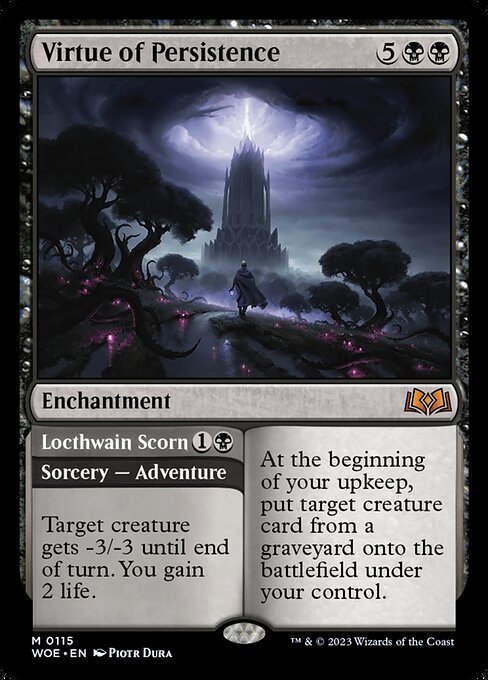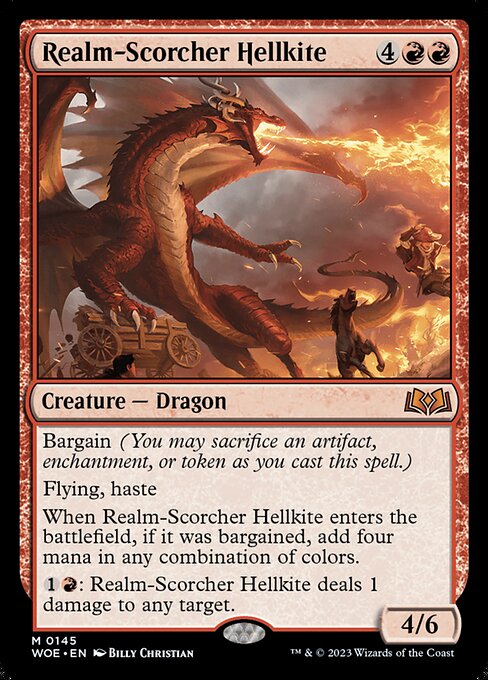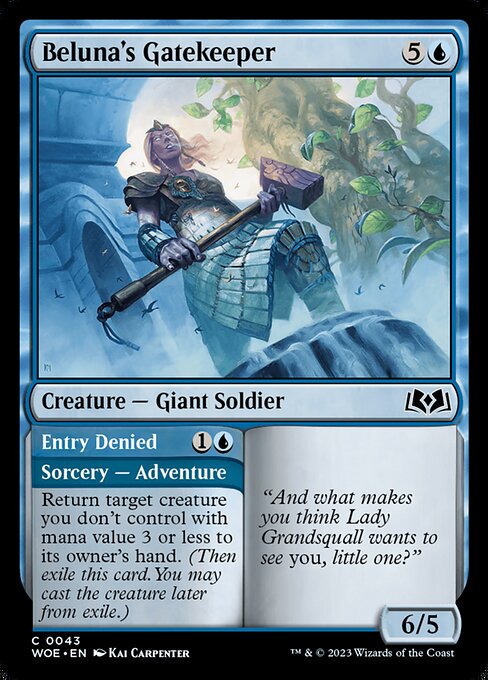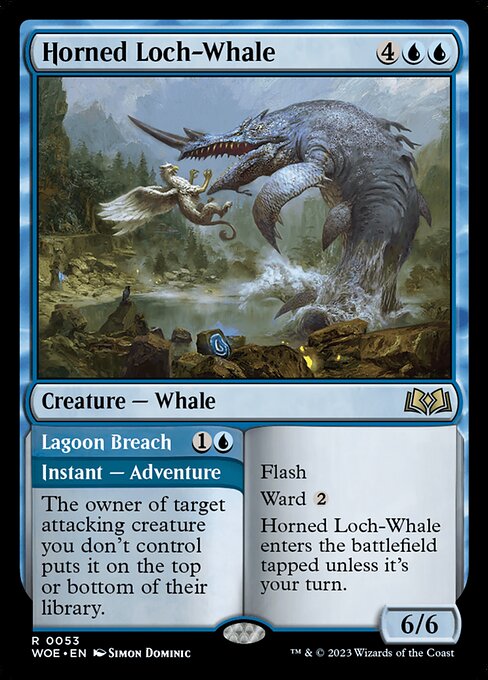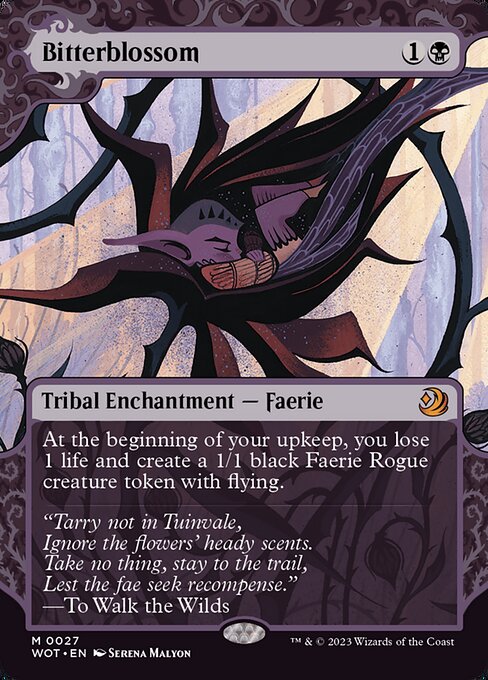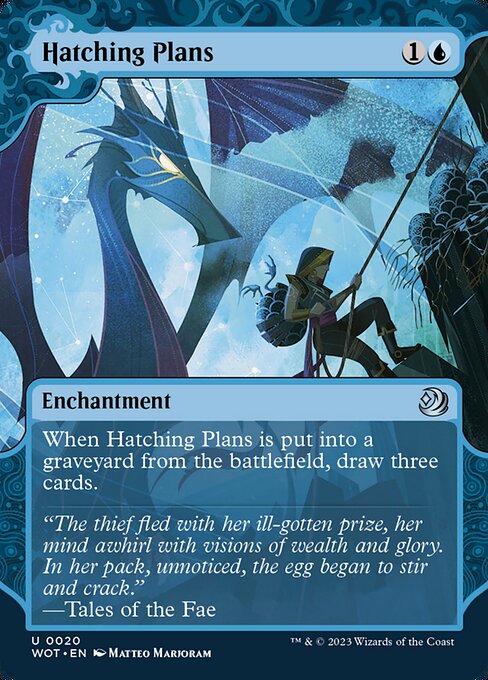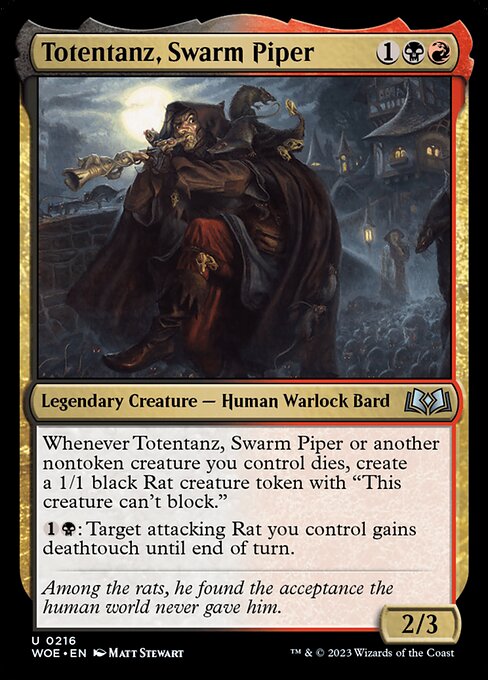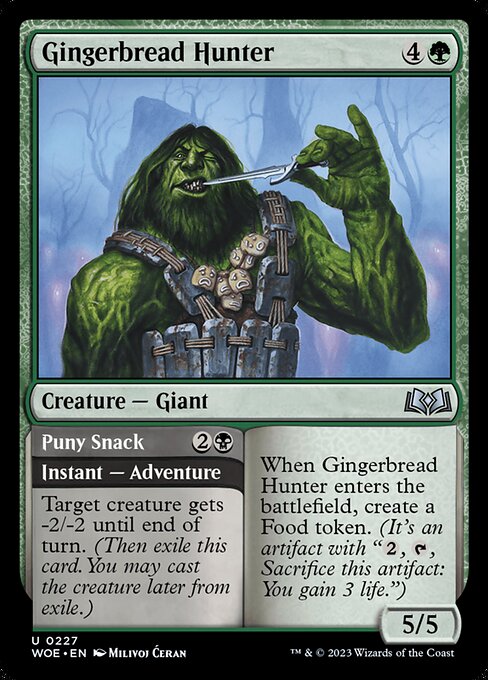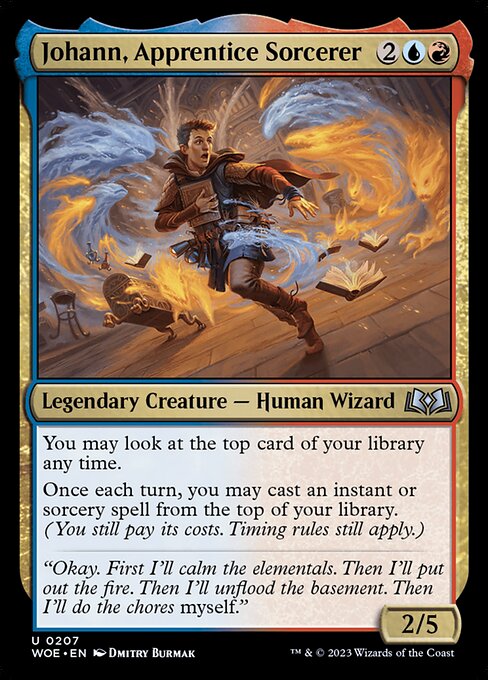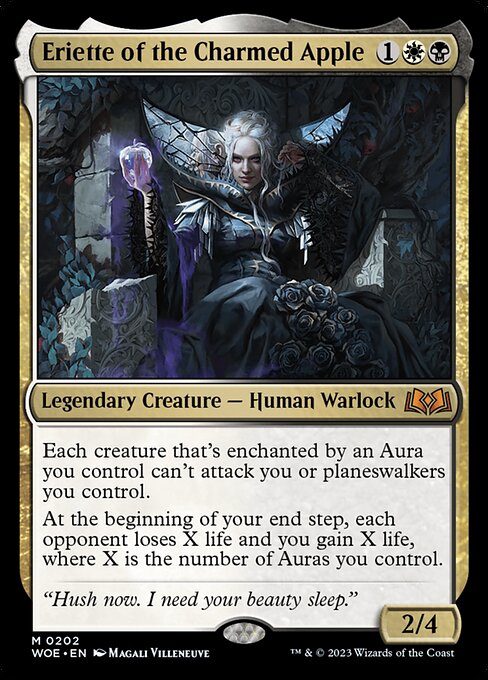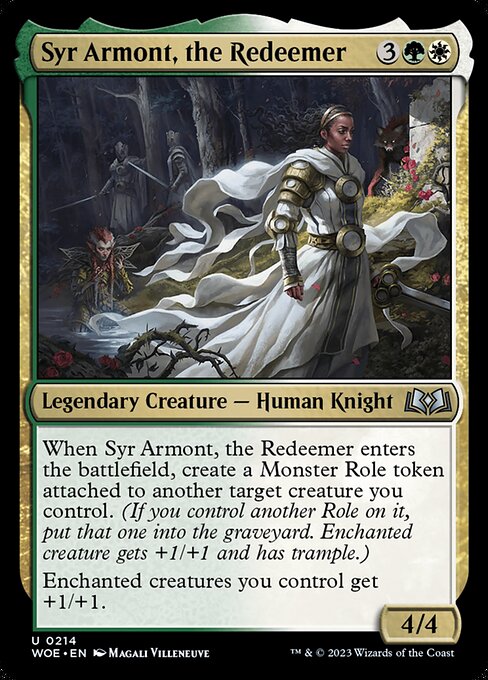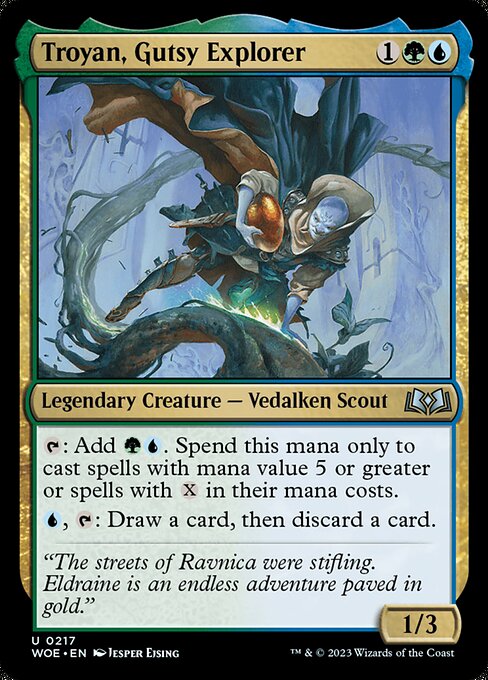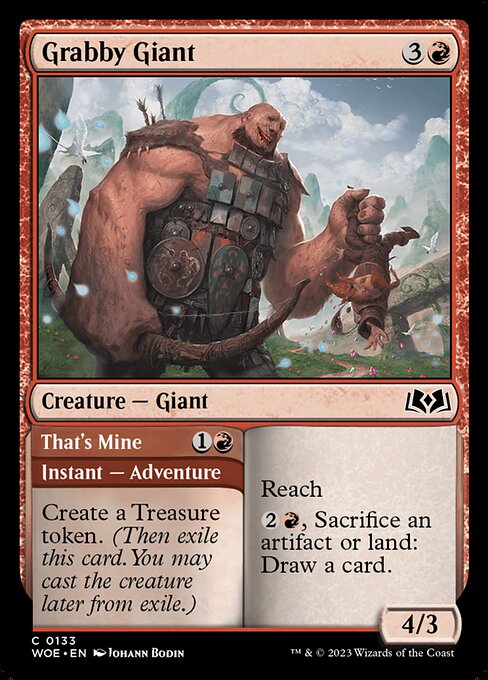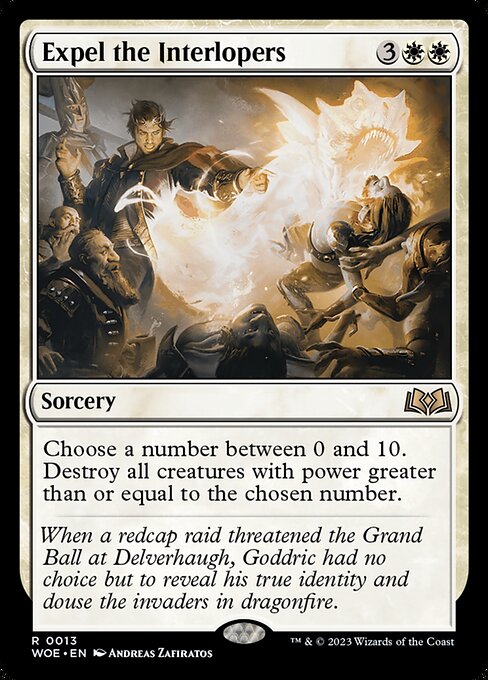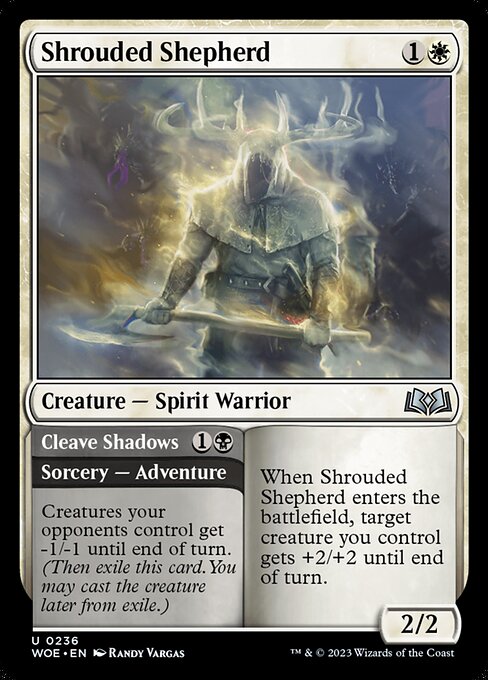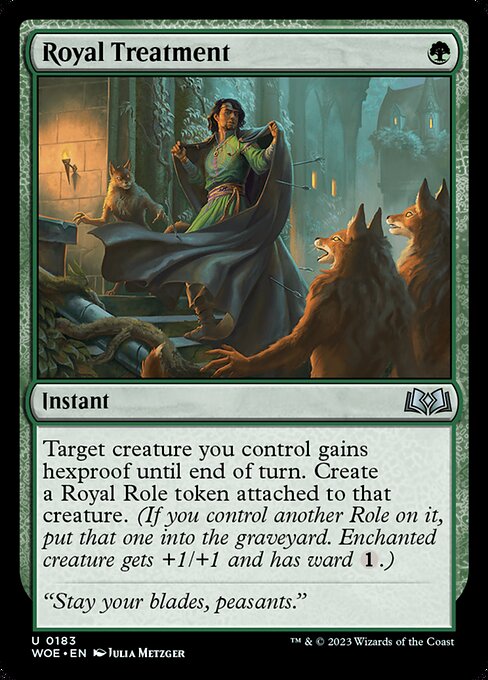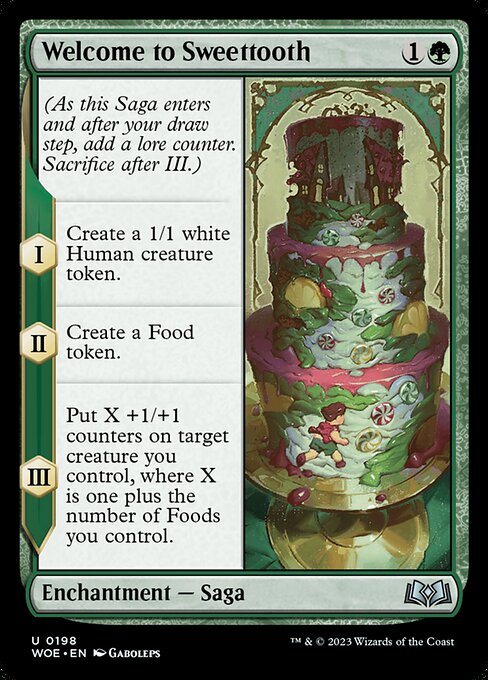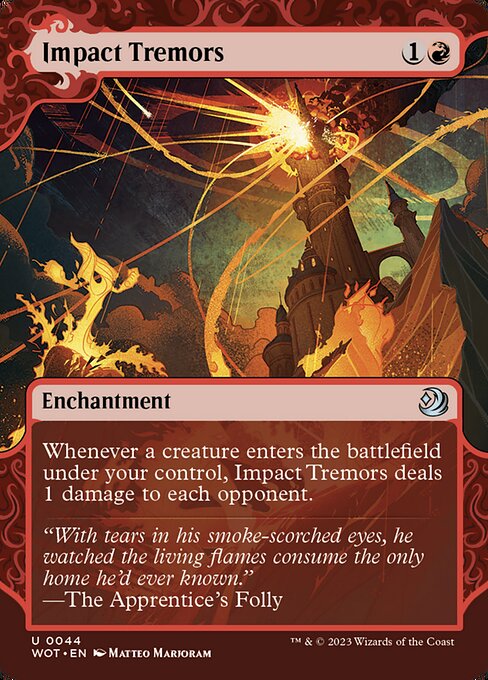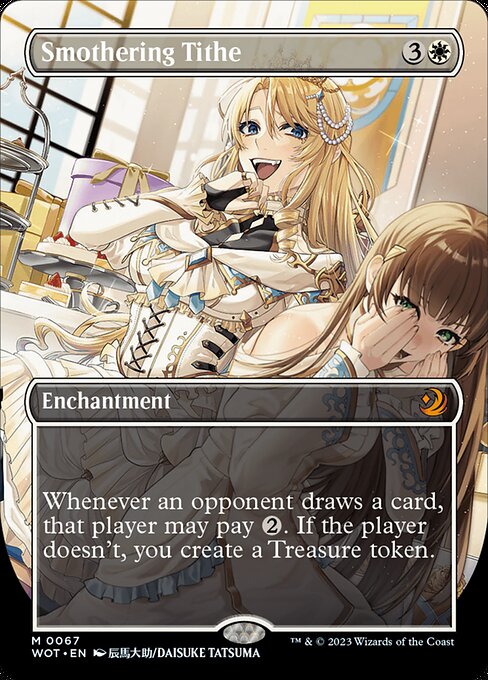Table of Contents
Hey everyone! With WOEfully little time remaining until the Arena Open, I’m here to drop my comprehensive draft guide on you with all the information you need to crush the competition. I’ve been pounding away at drafts to try everything that I possibly can to bring you the best material possible. There have certainly been some ups and downs along the way, but overall, I would describe it as an extremely wild adventure. I’m sure you all saw what I did there so I’ll stop with the blathering and get on with the show.

Wilds of Eldraine (WOE) Limited Guides
- Tier List
- Alchemy: Eldraine 🆕
- Draft Guide
- Quick Draft Guide
- Archetypes Guide and Example Decks
- Underperformers and Overperformers
- Combos and Synergies
- Prerelease and Sealed Guide
- Mechanics Guide
- White Review
- Blue Review
- Black Review
- Red Review
- Green Review
- Artifacts, Lands, and Multicolor - Part 1
- Multicolor Part 2
- Enchanting Tales
Key Ideas of Wilds of Eldraine Draft
One of the biggest things you can do to improve your win rate is to take your time to think through the options because WOE is a very detail-oriented format. Even when playing the aggressive decks, there are so many small decisions that can cost you the game. These aren’t your typical glaring mistakes that stand out, but more along the lines of letting a rat through for damage or not properly double blocking to play around a trick. While games can snowball, I have ran into a lot more tight games that came down to proper decisions.
This format also really rewards you for creating extra game pieces. While Bargain is the most obvious reason, having more options because you have food tokens or Roles really adds up.
One of the other big questions that I get is whether this is a synergy or power format. While power is certainly important, I would lean more towards synergy because you will rarely end up playing the “best” twenty-three cards you draft while instead focusing on building the best deck.
It’s not that simple though because you’re not always looking for coupled synergy where your cards need to combo together. It’s singular path synergy where the most important thing is your deck having a plan and executing it. That means that the pieces all want to be working towards the same end game. A great example of this is that you don’t need sacrifice outlets for Twisted Fealty to be good, you just need to be trying to kill them quickly.
Having said that, there certainly are cards that you need to pay attention to coupled synergy for. Hatching Plans and The Princess Takes Flight are both amazing cards, but you have to make sure that you pick up bargain cards or their value rapidly plummets.
Adventure is a returning mechanic that is obviously great in limited because it provides versatility alongside a natural two for one. Don’t go all out taking the lower end ones over better cards, but they are worth more than the sum of their parts since you have the option to get both.
Normally we have to talk a lot about any bonus sheet cards, but unfortunately (as you’ll see in my do not draft section) most of these belong in a dumpster fire. There are some complete bombs like Bitterblossom and Goblin Bombardment along with some lower end playables such as Stab Wound. Overall, the term lacking would be an understatement.
The disparity in card quality in these is really disappointing to me because some people get extra busted cards while others end up with blank pieces of cardboard. It just adds another lottery process to limited. Hopefully the next time they do a bonus sheet, it has a bit more balance to it.
Format Speed
While it’s almost impossible for modern limited to consistently provide a slow experience, this one is right up there with being one of the faster formats. Some of the factors in this are the rat tokens not being able to block and cheap, efficient removal. There are also a bunch of playable combat tricks that can really punish you. Basically you’re gonna have a bad time if you don’t have enough cheap creatures or cheap interaction.
One of the interesting points that I haven’t heard discussed much is that the win rate on the play for traditional WOE draft is right up there with both forms of ONE Drafts. It’s odd because that was a huge talking point during that set and it’s just being glossed over here. In Bo3, this can really come up with sideboarding allowing you to shift your deck for whether or not you go first because you know how much of a disadvantage you can be at.
Archetype Tiers
I know a lot of people want me to do color rankings, but I find that to not present an accurate enough picture as certain colors perform significantly better in combination with others than they do in a general sense. Instead we’ll be talking about the different tiers I rank the archetypes in. This also lets me add things outside of the traditional archetypes.
Top Tier Archetypes
My top tier of archetypes contains Mono Red, Boros, Rakdos, and Golgari.
Mono red might not even be viable to get into anymore because the color has started to be drafted more appropriately. It was comically underdrafted during the start of the format, but sometimes you still end up with pick five Imodane's Recruiter. I’m mostly bringing Mono Red up because when it is open, it can be totally insane.
Boros is the best performing archetype, but white isn’t that great of a color outside of this combination. That means that if I am taking white cards early, I am usually focused on taking the aggressive ones that would go well in Boros instead of generically good white cards.
Rakdos is another top tier archetype containing what would be the best two colors if I was ranking them. It’s not quite as good as Boros IMO, but close enough that it’s in the same tier. It also lets you fall back into Golgari if red gets cut off.
Golgari is mainly up here because it plays well against all of the aggressive red decks in the format. All of the food and cards like Hamlet Glutton really make life difficult for anyone trying to sneak in twenty damage.
Second Tier Archetypes
My next tier of archetypes contains Gruul, Izzet, and Green Based Multicolor Shenanigans
I’ve went hard on some Gruul decks lately and they have not disappointed. What’s been happening is that I’ve been getting just enough good red cards that I don’t want to abandon it while green has felt really open. It’s pretty easy to fill in the big creatures in Gruul, but that just makes Torch the Tower even more of a key pickup to prevent yourself from being ran over while building the bigger board.
You can have a lot of different variations of the Izzet deck. You need to determine whether you are building a tempo or control deck early enough to draft accordingly. Aquatic Alchemist is a key card in either version so you may have to take it higher than expected. Flick a Coin feels like one of the most Izzet designs we’ve seen.
Frantic Firebolt can even be good if you have a high enough spell count. Vantress Transmuter can also be key because Izzet can have a problem with large chonkers like Hamlet Glutton. This is also the only deck I actively want Unruly Catapult in because it can add up quickly with all the spells and you can’t forget about the Curiosity combo.
I’m chunking all of the Green based multicolor shenanigans decks together here. You can go completely hog wild on it or just have enough mana fixing to cover off color adventures. The biggest question to ask yourself is ”Is the power worth the inconvenience?”. Often times you can get a slightly lower power level while having better mana, but I’ll leave that individual evaluation up to you. I probably don’t have to say this, but Brave the Wilds and Prophetic Prism are great enablers here.
Third Tier Archetypes
The next tier down contains the Selesnya, Orzhov and Dimir archetypes.
For me, Selesnya has been a straight forward beatdown deck. When its chugging down the tracks at full speed it can feel unstoppable, but without the right cards it can struggle in the late game. A lot of it’s problems are from its lack of reach and card advantage. It’ll just run out of gas and sit there.
Orzhov really wants to stack the cheap enchantments to accumulate value. Hopeless Nightmare and Hopeful Vigil are both great common ways to achieve this. That means that Stockpiling Celebrant goes way up here as well.
Dimir really needs counterspells and cheap removal. I’ve found that it’s at is best going harder on control, but you need to be able to know when you have to switch to a tempo game.
Lowest Tier Archetypes
The bottom tier archetypes are Simic and Azorius. That doesn’t mean they are unplayable, just that you mainly only want to go into them when they are wide open.
Simic can be pretty atrocious if you try to play it as a midrange deck. As I said way back in the archetypes article, you really need the U-shaped mana curve to maximize this. It needs cards that can do something early and late such as Beluna's Gatekeeper and Obyra's Attendants. Even a much-maligned card such as Beanstalk Wurm can have a place here by helping you jump up to the more relevant part of your curve.
Azorius is considered the bottom of the barrel because the tap theme just doesn’t do enough unless you get handed all the payoffs. The better option is to be going into a tempo version with a lot of bargain cards. You want to be getting cards like The Princess Takes Flight, Hopeful Vigil, and Hatching Plans to provide Kellan's Lightblades and Archon's Glory with bargain fodder.
Tips and Tricks
When it comes to Crystal Grotto (which should be played more than it has been), it’s best to know what you need before the scry. If you know you need a land, it’s cool to play it turn one. If your hand can go either way, it’s better to wait to play it until you have more information.
Cutting lands can be a huge mistake because missing land drops is a death sentence. You can still cut lands for Brave the Wilds (even if I prefer to add up to 18 “lands” when I’m doing my brave math), just don’t cut lands because of reasons like you have a lower curve. The format is a lot more mana hungry than it looks and you don’t want to fall too far behind.
Speaking of Brave the Wilds, if you are cutting a land for it, don’t cut a Forest.
When splashing something that requires a bargain spell to maximize it, you need a heavier concentration of bargain spells because you don’t want to be forced to hold both in your hand waiting for the mana to work out.
Don’t forget that the newest Role is always the one that stays. I’ve seen this come up with Cursed Courtier and Return Triumphant where people thought it would workout before having their dreams crushed.
Speaking of replacing a Role, I’ve also seen people make the mistake of trying to use Royal Treatment for the +1+1 on something that already has a Role on it. Don’t be that person.
A great way to use Cursed Roles is letting them block a rat and then cursing it to kill the now 1/1 with one damage on it. They also combo nicely with cards such as Rat Out and Frolicking Familiar being able to pick anything off.
Grabby Giant has been performing above expectations by providing a useful treasure, some secret reach, and a way to mitigate flood.
Pay attention to which Celebration cards trigger at the beginning of combat and which trigger at any time. This determines which ones can be used as a “trick”. Casting the double rats off of Ratcatcher Trainee lets you pump Grand Ball Guest or Armory Mice while it doesn’t work for Ash, Party Crasher or Belligerent of the Ball
Stop playing Impact Tremors and Raid Bombardment. I have seen them a ton and they are some of the lowest performing cards in the set.
Stop trying to make Forced Fruition a thing. If your opponent can’t win with the best four spells in their deck after you paid six mana to do nothing, they probably weren’t winning anyway.
Sweepers
Expel the Interlopers is the big bad kaboom of the set, but it’s nowhere near as devastating as Sunfall was. If your opponent is suspiciously only playing small creatures with some Plains, be wary of this. If you think they have this, you want to try to force them into using it as just a five mana Wrath of God that you can still recover from.
Specter of Mortality is a potential big boom, but one that requires some setup. Be wary if your opponent has some Swamps and seems to be chump blocking a little too early to power this up.
Shrouded Shepherd can crush the rat decks out of nowhere. It is also something to be considered when your opponent makes a suspicious attack where your blocks line up a little too perfectly.
Asinine Antics is only a sweeper in the broadest of terms because it can hit everything at once. It has been quite underwhelming unless you happen to follow it up with Shrouded Shepherd.
Combat Tricks
Oh boy, there are A LOT of combat tricks in this set. I’ll be breaking them down by effect type to keep this section at a rational length.
Archon's Glory is the best of the pump combat tricks. It’s good in both aggressive and defensive decks because the lifelink can be such a huge swing. It’s also a great way to bargain away The Princess Takes Flight. If they keep leaving one white mana up, this is usually the culprit.
The other single creature pump tricks to be concerned about are Ferocious Werefox, Monstrous Rage, Sugar Rush, and Titanic Growth. Leaping Ambush and Kindled Heroism are technically on the list, but I haven’t ran into them much.
Gnawing Crescendo is the group pump spell that you mostly need to watch out for when playing against go wide rat decks.
Not dead After All is great in aggressive mirrors where you are functionally replaying your three or four drop for one mana to keep the pressure on. It still feels a bit underplayed.
Rat Out has been getting more play as the format evolves especially out of the sideboard in Bo3. Remember that it can be used to win a combat and not just as kill target one toughness creature.
Obyra's Attendants is one to look out for when they have constant priority and appear to want to make a “fair trade”.
Royal Treatment and Water Wings are the hexproof tricks of the format. Water Wings hasn’t gotten much run, but Royal Treatment has been handing out a whole bunch of one-way tickets to blow out city.
Two-Headed Hunter can get pretty deadly especially on a trampler. It’s definitely something you should be considering when you are calculating “how could I possibly lose”.
Eerie Interference is mostly mentioned because at some point someone is going to get Fogged in the middle of nowhere. There will be matchups that you want to board this in for, but in general it’s more important to be aware of this card existing.
Counterspells
Disdainful Stroke has been performing better than expected especially in sealed. While it has the downside of not being able to counter the front part of a lot of adventure spells, it does cheaply deal with a lot of the bombs in the format.
Ice Out is a hard counter, but it can be difficult to hold up because it can be pretty obvious when you are sitting on this. It’s certainly something that I am more likely to add into my deck once I have a Hatching Plans or anything else that I actively want to Bargain away.
Spell Stutter is something that you can play around a bit as long as they don’t have a pile of faeries. It leads to some play patterns that you should be keeping in mind throughout the game. When you are on the play, it can often be correct to play an important instant during your turn two so they don’t have an opportunity to play their second land and counter it. An example of this is Virtue of Loyalty, why take the chance of getting your bomb countered when you can cleanly land the adventure during your turn. There are more likely to occur examples like Picklock Prankster, but just something to consider.
Spellscorn Coven isn’t exactly a counterspell, but it is a reasonable facsimile. You have to be careful about the return to hand, make you discard it line. Something to think about when determining whether or not to hold a land in hand.
Bombs
These are the Pack One Pick One (p1p1) no doubt, windmill slam, just take them rares of the set. These are not in rank order, just take these over any non-mythic uncommon or common.
- Faunsbane Troll
- Goblin Bombardment
- Gruff Triplets
- Lord Skitter, Sewer King
- Realm-Scorcher Hellkite
- Redcap Gutter-Dweller
- Spellbook Vendor
- The Goose Mother
- Virtue of Loyalty
- Virtue of Persistence
Mythic Uncommons
These might be uncommons, but they sure don’t play like they are.
Do Not Draft List
Normally I would list a few of the trap cards here, but it would just be a big list of the enchanting tales sheet. Seriously there are a ton of them that are stone cold worthless.
Wrap Up
Thanks for reading! Hopefully this provides you with all the information you need about WOE limited. Good luck with crushing the Arena Open this weekend! I’ll be back soon with more limited analysis for you. Until then, stay classy people!
I’m always open to feedback, let me know what you loved, what you hated, or just send dog pics. You can contact me at:
Premium >
Enjoy our content? Wish to support our work? Join our Premium community, get access to exclusive content, remove all advertisements, and more!
- No ads: Browse the entire website ad-free, both display and video.
- Exclusive Content: Instant access to all exclusive articles only for Premium members, at your fingertips.
- Support: All your contributions get directly reinvested into the website to increase your viewing experience!
- Discord: Join our Discord server, claim your Premium role and gain access to exclusive channels where you can learn in real time!
- Special offer: For a limited time, use coupon code L95WR9JOWV to get 50% off the Annual plan!

























